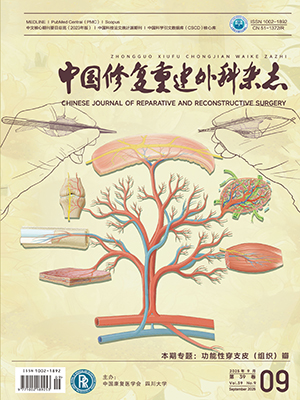| 1. |
杨超, 张培培, 李军辉, 等. 衰老所致泪槽畸形和睑颊沟畸形发生机制的解剖学研究. 中华整形外科杂志, 2010, 26(2): 139-142.
|
| 2. |
李薇薇, 王晓军, 乔群, 等. 下睑袋的临床分型和治疗方案. 中华医学美学美容杂志, 2011, 17(1): 3-5.
|
| 3. |
Trepsat F. Periorbital rejuvenation combining fat grafting and blepharoplasties. Aesthetic Plast Surg, 2003, 27(4): 243-253.
|
| 4. |
Yang F, Ji Z, Peng L, et al. Efficacy, safety and complications of autologous fat grafting to the eyelids and periorbital area: A systematic review and meta-analysis. PLoS One, 2021, 16(4): e0248505. doi: 10.1371/journal.pone.0248505.
|
| 5. |
Murri M, Hamill EB, Hauck MJ, et al. An update on lower lid blepharoplasty. Semin Plast Surg, 2017, 31(1): 46-50.
|
| 6. |
Goldberg RA. Transconjunctival orbital fat repositioning: transposition of orbital fat pedicles into a subperiosteal pocket. Plast Reconstr Surg, 2000, 105(2): 743-748.
|
| 7. |
Barton FE, Ha R, Awada M. Fat extrusion and septal reset in patients with the tear trough triad: a critical appraisal. Plast Reconstr Surg, 2004, 113(7): 2115-2121.
|
| 8. |
张杨, 李高峰, 许素琪, 等. 内切口骨膜下平面剥离眶隔脂肪下置矫治泪沟型睑袋. 中国美容医学, 2020, 29(11): 1-3.
|
| 9. |
Mendelson BC, Jacobson SR. Surgical anatomy of the midcheek: facial layers, spaces, and the midcheek segments. Clin Plast Surg, 2008, 35(3): 395-404.
|
| 10. |
Yoo DB, Peng GL, Massry GG. Transconjunctival lower blepharoplasty with fat repositioning: a retrospective comparison of transposing fat to the subperiosteal vs supraperiosteal planes. JAMA Facial Plast Surg, 2013, 15(3): 176-181.
|
| 11. |
Wong CH, Mendelson B. Midcheek lift using facial soft-tissue spaces of the midcheek. Plast Reconstr Surg, 2015, 136(6): 1155-1165.
|
| 12. |
Jin Y, Gao W, Teo HMT, et al. Transconjunctival lower blepharoplasty using midcheek spaces for orbital fat transposition (S. O. F. T. ). Ann Plast Surg, 2021, 86(6): 620-626.
|
| 13. |
Wong CH, Hsieh MKH, Mendelson B. Mid cheek lift via the facial soft tissue spaces. Plast Reconstr Surg, 2023. doi: 10.1097/PRS.0000000000010161.
|
| 14. |
Chatel H, Hersant B, Bosc R, et al. Midface rejuvenation surgery combining preperiosteal midcheek lift, lower blepharoplasty with orbital fat preservation and autologous fat grafting. J Stomatol Oral Maxillofac Surg, 2017, 118(5): 283-288.
|
| 15. |
宋震. 伴随泪沟畸形的下睑袋整形治疗进展. 组织工程与重建外科杂志, 2020, 16(3): 253-256.
|
| 16. |
Hedén P, Fischer S. Comparison of fat repositioning versus onlay segmental fat grafting in lower blepharoplasty. Aesthet Surg J, 2021, 41(7): 717-727.
|




